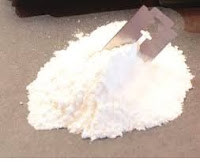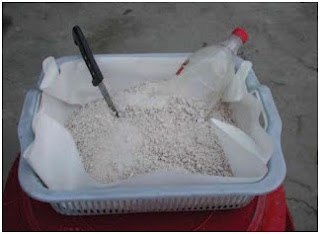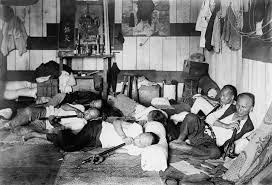Chapter 3
The Silk Route
To
understand the entire story which I am trying to narrate, we will have to go
back into the history by a few hundreds of years. Yes, this travel in to a past
time zone is very important to understand my story, no matter how quickly I
want to get done away with it.
I
don’t know if you are interested in history, but if you have your basic general
knowledge intact, I am sure that you must have read about the famous and historic ‘Silk Route’. In our school history books, most of us must have read about it;
the famous and legendary ‘Silk Route’. The ancient route through which silk
produced in China was transported all over the world, ultimate destination
being the old kingdoms of India, Persia, Turkey and Rome.
The ancient ‘Silk Route’
It
is the story of one of the world’s oldest and historically most important trade
routes and its influence on the cultures of China, Central Asia, India and even
the West. Extending over 6,437 kilometers, about 4000 miles, it is estimated to
have started around the commencement of the Han dynasty in 206 BC. This dynasty
is estimated to have lasted till around 220 AD. Since silk comprised large
proportion of trade along this route; in 1877, it was named ‘The Silk Road’ by
Ferdinand von Richthofen, an eminent German geographer. The route consisted of
several ‘roads’, but the most important one began from Chang’an (now Xian);
then, through the Hexi corridor to Dunhuang, where it got divided into three
sub routes; the Southern Route, Central Route and the Northern Route. These
three routes spread all over the Xinjiang Uygur autonomous region; extended as
far as Afghanistan, Pakistan, India and further ahead to Iran, Iraq, Turkey and
then to Rome. All along the history of the region, this route, which was
discovered by ancient traders, was destined to play immensely important, yet
distinctly different roles.
The first
conversion was to be from the ‘Silk Route’, to become the...
‘Invasion
Route’.
It
was primarily through this route that Greeks, followed by fierce Mongols and
other tribes of Central Asia chose to invade India, which then included the
areas which now form part of the present Pakistan and even beyond. This was the
route through which the great Moguls also came in to India and made it their
home. It was at this time, the time of the Moguls that this route once again
became a primary ‘Trade Route’.
The Trade Route 2
This
was the time normal trade again flourished through this route; major
merchandise being silk, precious stones and metals, carpets, textiles and condiments,
dried fruits of Peshawar, included. According to some old narrations, it was
also the route, even then, through which
opium, produced in China, was also traded.
The trade,
including limited influx of opium, through this route, continued even during the
British Raj in India when some parts of the country were further encouraged to
cultivate the opium plant, which is Poppy.
Poppy, the flower of 'death'?
In context
of modern history, the route about which we mentioned and which was popularly
known as the Silk Route is the one which extends from the Central Asia, the
region which now comprises of Afghanistan and North West area of Pakistan, to
different sides including India on one side and from across the Balkans etc,
off to Europe thorough the newly created countries of Kyrgyzstan, Uzbekistan, Turkmenistan and Kazakhstan as
also Iran and then off to Turkey.

British Raj
In context of this book, we will now specifically talk about the route
from Central Asia to India, via Pakistan and then into the Indian Punjab. This
historic and traditional route has also been changing its tone, tenor and
colour from time to time, just like we Indians have also been changing the
colour of our head gear from time to time and in accordance with the ‘colour’
of the political leadership; from turbans of different shapes and sizes during ancient
empires to hats during the British time and then on to Gandhi and other caps
and turbans of various colours, hues and shapes after the ‘so called
independence’.
Changing Colours
This
shiny silk route to India, which brought in riches as also invaders, has also
been changing its colour and tenor from time to time, from the sheen and luster
of silk to colours of precious stones, mixed with a bit of black colour of
opium to ‘blood red’ off and on and then to a ‘painful red’ during the initial
years of our independence, the fateful year of 1947.
Silk Gems
Red of Blood
Conversion to 'The Red Route'
The Painful & Bloody 1947
Images of ghastly 1947
This
old Silk Road got drenched with the Hindu, Sikh and Muslim blood. It was an
irony because the colour and chemical composition of all this blood was and
still is the same. Religion and politics had divided the human race living in
this region and led to one of the cruelest bloodshed, one of the cruelest bloodshed
ever because of petty political consideration under the subterfuge of religion
as well. Brotherly ties became ‘bloody’ and then all of a sudden this legendary
and immortal route again opened up. This time the good old ‘Silk Route’ had got
covered with blood and became the ‘Red Route’, the ‘Blood Route’. It was the
human blood with which that part of earth became red, blood of countless number
of individuals, Hindus, Sikhs and Muslims. It was the greatest tragedy for the
region when human life was taken by erstwhile brothers in the name of religion,
caste, creed and country. Hatred reigned supreme.
Time
is a great healer and over a period of time; continued and still continuing outburst
of mutual hatred notwithstanding; things got settled to an extent or other and trade,
both legal and illegal, opened up. Various items including dried fruit and ‘Afghani
Afeem’ came in from Afghanistan and gold through Pakistan. Since the initial
years of independence till about the end of eighties there was immense difference
in the prices of gold in India and abroad. Though on account of the Indian taxation
policy, still the prices of gold in indie and abroad, do vary but at that time,
the profit margin were immense and ‘risks’ were lesser. This led to a spurt in smuggling
of gold. Routes of smuggling of gold into India were many but more important
ones were either on the west coast of India, the coastal areas of Maharashtra, particularly
around the Mumbai harbour or through the porous Indo- Pak border along Punjab. As
far as Punjab is concerned, on account of centuries old strong commercial, social
and ethnic links between Punjabis living in Indian and Pakistani Punjabis, gold
‘smuggling’ picked up almost instantaneously. Religion and political leanings
notwithstanding, Punjabi speaking populace on both sides of the Indo-Pak border
through Indian and Pakistani Punjab, is the same. Same historic legacy, same
language and same sub castes. Cheemas, Bains, Ranas, Choudhuries and a lot many
other sub castes with similar surnames and sub-castes exist on both sides of
the border. Commercial ties and trade requires substantial monetary backing and
‘investments’. Punjabis living on both sides of the border were and still are
rich, unlike their poorer brethren living along the Rajasthan and other
borders. Both sides had and have money and guts and as such, willing to
‘invest’ in the gold smuggling. The porous borders made things still easier, a
child’s game. Villages on either side of the border became hot beds of
smugglers.


Old kothies on either side of the border
My hereditary village Maddoke Brar located on Indo-Pak
border belt of Amritsar was one of such most notorious of places involved in smuggling
of gold and an abode of a number of notorious gold smugglers. Though decades
ago our family had moved out of the village to Baghdad and then to England, but
it did hurt when I came to know of all fact. A good number of remaining individuals
of the clan and a number of other ‘docile’ individuals were also subsequently ‘kicked
out’ of their native village. Their houses, lands and property like our own
were grabbed by some such of notorious persons.
Understandably
smuggling requires political and police protection, and some of the renowned
politicians of yester years, living on both sides of the border got involved in
one way or the other and became more than willing partners in smuggling of gold
through this border. Some of the prominent politicians of yester years of
Punjab were known to be top gold smugglers themselves where as a number of
others provided protection and received protection money. Police and civil
officers posted and working in the region are also said to have became wilful
patrons of gold smugglers and very often used their official clout, resources
and men for smuggling of gold. A number of them were themselves said to be the
couriers of gold from Punjab further into remaining parts of India. Bullion markets
in the country primarily thrived on supplies through Punjab and the west coast
of the then Bombay and neighbouring region. The good old ‘Silk Route’ had given way to the ‘Yellow Route’.
Gold bars
'Conversion to White'
Smuggling
along the route remained ‘yellow’ till about mid 1980s and then it again
changed its colour. This time it was destined to become ‘white’. White, the
colour of peace, was now to become the colour of death, decaying white corpses.
It was the commencement of the era of heroin and smack.
Heroin /
Smack























































